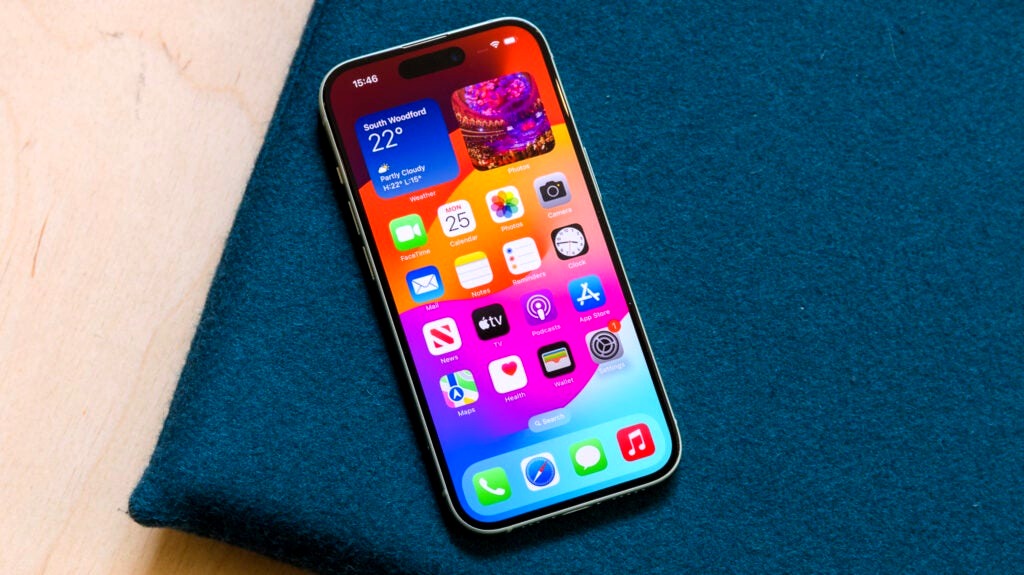The iPhone 15 by Apple faced a straightforward task, especially after the pause in major upgrades for the iPhone 14. The deliberate halt in the previous year seemed to be for the purpose of establishing product differentiation. Consequently, any alterations, even if minor, would have been perceived as noteworthy this year.
As a result, Apple has introduced a plethora of new features for the year 2023, making the iPhone 15 a device brimming with updates.
Key Upgrades:
This year’s entry-level iPhone from Apple boasts four notable improvements. Firstly, the processor has received a substantial enhancement, transitioning from the A15 Bionic to the A16 Bionic. This upgrade brings performance levels on par with the previous year’s iPhone 14 Pro models. This marks a significant advancement over the iPhone 14, which shared the same processor as its predecessor.
The second major change involves the removal of the much-criticized notch, replaced by the Dynamic Island – a cutout for the selfie camera that not only enhances aesthetics but also incorporates interactive notifications.
The primary camera has undergone a significant upgrade, shifting from a 12MP (f/1.5) unit to an impressive 48MP (f/1.6) camera. Additionally, 2023 is Apple’s USB-C year, and the iPhone 15 embraces this shift.
Despite these updates, the physical appearance of the phone remains largely unchanged from the previous year. It maintains a dual-camera setup on the rear, with a 12MP 13mm ultrawide camera accompanying the enhanced main camera, and a 12MP (f/1.9) selfie camera on the front.
While there is a slight reduction in bezel size, the overall dimensions of the phone remain consistent. The AMOLED display measures 6.1 inches diagonally with a resolution of 2,556 x 1,179. However, it is noteworthy that the brightness has been improved, peaking at a quoted 2,000 nits.
Price and Competition:
The pricing of the iPhone 15 brings a smile, as it is £50 cheaper than the iPhone 14 at its launch last year. The model is priced at £799 for the 128GB variant, £899 for the 256GB version, and £1,099 for 512GB.
For those seeking a larger screen, the iPhone 15 Plus offers the same features with a bigger battery and a 6.7-inch display at a premium of £100 across all variants. Alternatively, the iPhone 15 Pro provides a slightly improved main camera and a 3x telephoto lens at a starting price of £999. For an additional £100, the iPhone 15 Pro Max offers better battery life, a 5x optical telephoto camera, and a base storage of 256GB.
For those open to alternatives outside the Apple ecosystem, the Google Pixel 7 Pro and the Samsung Galaxy S23 present strong contenders in terms of features and value.
Dynamic Island, USB-C, and Design:
The notable physical changes with the iPhone 15 include the introduction of the Dynamic Island and the adoption of the USB-C port. The customizable Action button is exclusive to the Pro model, and opinions on its inclusion vary. The relocation of the “True Depth” selfie camera results in a more elegant and streamlined appearance with the Dynamic Island.
The USB-C upgrade not only reduces cable clutter but also introduces new capabilities. DisplayPort support enables screen mirroring, and file transfer to and from external storage is possible, albeit at USB 2 speeds of 480MB/sec. The USB-C port can also be utilized to charge other devices, providing flexibility in various scenarios.
While there are additional improvements, such as slimmer bezels, contoured edges, and new color options, the iPhone 15 maintains its IP68 dust and water resistance and offers the option of using a SIM card or an eSIM in Europe.
Display:
Despite some enhancements, the screen disappoints as it retains a 60Hz refresh rate. This is considered subpar for a company of Apple’s stature, giving the iPhone 15 a somewhat sluggish feel. However, color performance is commendable, covering up to 90.17% of the P3 color space, with excellent accuracy in sRGB color.
Brightness sees an improvement, reaching 832cd/m2 in general usage and up to 2,000cd/m2 with auto brightness enabled. While this extreme brightness may impact battery life, it ensures readability in various lighting conditions. Enhanced brightness also benefits HDR playback, providing impactful specular highlights during HDR content consumption.
Performance:
The iPhone 15 is powered by the A16 Bionic chipset, offering commendable performance. Benchmark comparisons demonstrate superior performance compared to the iPhone 14 and competitive Android smartphones. While graphics power appears to have plateaued, the overall performance is noteworthy.
Battery life, however, falls short of expectations, with a runtime of up to 20 hours for local video playback and 16 hours for streamed video. This results in a need for frequent charging throughout the day.
Cameras:
The iPhone 15’s camera system presents incremental improvements, with the main camera upgraded to 48MP (f/1.6). Despite lacking ProRAW support, the device introduces an automatic portrait mode for post-capture adjustments. Image quality in good light exhibits subtle enhancements, with sharper details and richer colors.
The new sensor excels in low-light conditions, providing more contrast, detail, and vibrant colors compared to the iPhone 14. The video capabilities remain consistent with the iPhone 14, offering 4K Dolby Vision HDR recording and impressive stabilization features.
Verdict:
The cumulative improvements in the iPhone 15, including a superior main camera, enhanced performance, and a brighter display, make it a noteworthy update. While battery life has seen a reduction, the overall package, coupled with a lower price point, makes the iPhone 15 a compelling choice compared to its predecessor. Though not revolutionary, the iPhone 15 offers compelling reasons for purchase in 2023.






Recent Comments